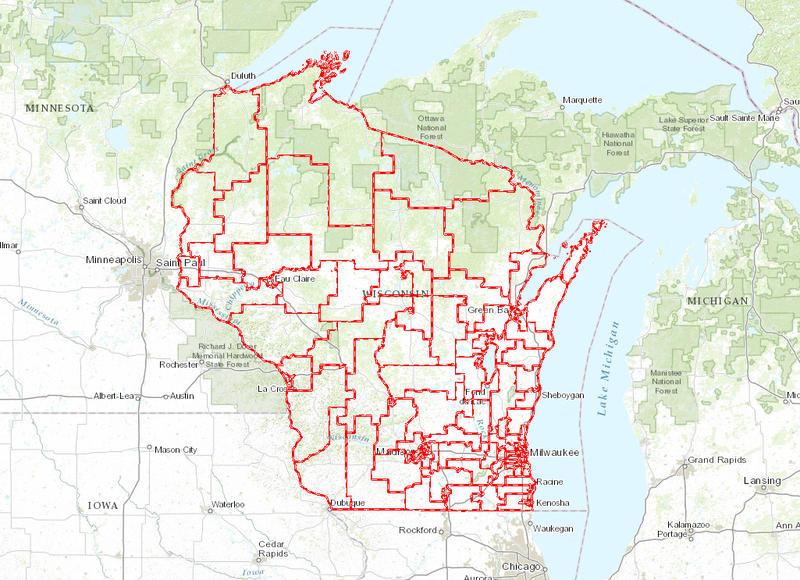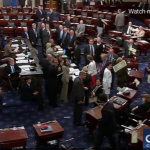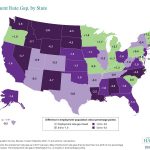After a series of victories at the Supreme Court, reformers seeking to end gerrymandering of legislative districts have turned their attention to Wisconsin.
A federal judge will determine whether the Wisconsin Assembly’s district map is unconstitutional because it was drawn in such a way that some voters’ ballots are meaningless. Because some districts are carved up in such a way that they are dominated by Republicans, the plaintiffs argue that Democrats’ voting power in those districts is muted.
If the judge strikes down Wisconsin’s map (above), which is dominated by squiggly lines all the way from Lake Michigan to the Minnesota border, that could emerge as a landmark decision affecting state and federal districts across the nation. Possibly in Michigan too.
Though the Michigan campaign for a redistricting reform ballot proposal crumbled, the federal courts could emerge as an alternative opportunity for advocates seeking to end gerrymandering.
Essentially, the court proceedings that began this week in Madison represent a test case for mathematical arguments that rely on election outcomes.
One set of data being used is from Wisconsin’s 2012 Assembly races, where Democratic candidates received 200,000 more votes overall than Republicans — 1.4 million versus 1.2 million. Yet, Republicans overwhelmingly captured the Assembly, 60 seats to 39.
Similar disparities between votes cast and seats won also exist in Michigan, based on the 2014 elections for the state House and Senate that were dominated by the GOP.
In past decades, the situation was reversed, with Michigan Democrats using their control of the Legislature to draw district lines to their liking.
In Wisconsin, a group of five political science professors from Binghamton (N.Y.) University crunched the numbers and found that Democrats probably have to win about 55 to 56 percent of the statewide vote to win control of the state assembly. The district map is drawn in such a partisan manner that Republicans need only win 44 to 45 percent of the vote.
In an Op-Ed published by The Washington Post this week, the professors concluded:
The plaintiffs are right that Wisconsin’s legislative districts were drawn in a way that discriminates against the state’s Democrats by systematically diluting the value of their votes in every election.
What happens in the Wisconsin trial could tell us a lot about whether courts will step in to undo partisan gerrymandering. Many people, perhaps including many judges, would be reluctant to see courts wade this far into politics. But in Wisconsin, the equal protection guarantees in the Constitution may require judicial intervention.
No matter the outcome, the decision will go directly to the Supreme Court for appeal. The high court is expected to accept the case.
Earlier this week, the Supreme Court blocked Virginia Republicans’ effort to redraw congressional district lines, completing a sweep of this year’s major high court redistricting cases by Democrats and minorities, according to USA Today.
Two Virginia voters challenged the way the congressional districts were redrawn after the 2010 Census, arguing that the Republican-controlled legislature violated the Voting Rights Act by packing black voters into an African-American congressman’s district to make surrounding areas better for white candidates.
Earlier this year, redistricting reformers won disputes over political lines in Texas and Arizona. Last year, they prevailed in an Alabama case.











